Disclosure: This article contains affiliate links. We may earn a commission from purchases at no extra cost to you, which helps our travel content.
The morning light filters through the steam rising from food stalls along Fuzimiao's narrow alleys as I clutch my well-worn food journal – a ritual I've maintained through 47 countries. Nanjing wasn't initially on my design research itinerary, but a chance conversation with a ceramicist in Shanghai convinced me that understanding Jiangsu cuisine was essential to appreciating the region's aesthetic sensibilities. 'The same hands that craft our porcelain also shape our dumplings,' she told me, a philosophy that resonated with my belief that design and cuisine share the same cultural DNA. After a week navigating this ancient capital's culinary landscape – from hole-in-the-wall family operations to refined teahouses – I've discovered that Nanjing's food, like its architecture, tells stories of imperial grandeur, regional adaptation, and meticulous craftsmanship that has endured for centuries.
Understanding Jiangsu Cuisine: The Artful Balance of Subtlety
Before diving into specific dishes, it's worth understanding what makes Jiangsu cuisine – one of China's eight culinary traditions – so distinctive. Unlike the fiery heat of Sichuan or the bold sweetness of Cantonese cooking, Jiangsu's approach is defined by a philosophy of qing dan (清淡) – a commitment to light, fresh flavors that showcase ingredients rather than overwhelming them.
During my stay at a small family-run homestay near Xuanwu Lake, my host Auntie Liu explained this concept while delicately slicing ginger into paper-thin sheets. 'We cook to reveal, not to transform,' she said, her knife moving with practiced precision. 'The skill is knowing when to stop.'
This restraint extends beyond flavor to texture and presentation. Many dishes feature contrasting consistencies – soft against crisp, smooth against granular – creating what locals call kou gan (口感), or mouth-feel. The visual composition of dishes often mirrors classical landscape paintings: balanced, intentional, with careful attention to negative space.
As a designer who's spent years documenting vernacular aesthetics, I was struck by how this culinary philosophy parallels Jiangsu's architectural traditions – both prioritize harmony, subtle sophistication, and an appreciation for natural materials. The region's food, like its classical gardens, reveals itself slowly, rewarding those patient enough to notice the nuances.

💡 Pro Tips
- Learn the phrase 'bu la' (不辣) meaning 'not spicy' if you're sensitive to heat – though most Nanjing dishes are naturally mild
- Jiangsu cuisine emphasizes seasonal ingredients, so ask what's fresh that day rather than sticking strictly to menu items
- Most authentic restaurants serve meals family-style – bring friends or join a food tour to sample more dishes
The Duck Dynasty: Nanjing's Famous Salted Duck & Duck Blood Soup
If there's one ingredient that defines Nanjing's food identity, it's duck. While Beijing may claim the more internationally famous roast duck, Nanjing's approach to this versatile bird reveals the subtlety and technique that characterizes Jiangsu cuisine.
Nanjing Salted Duck (yan shui ya) became my obsession after my first taste at Guangzhou Road's Dinghuaimen, where I watched a third-generation duck master deftly break down birds using techniques unchanged since the Ming Dynasty. The deceptively simple preparation – marinating whole ducks in brine before a precise steaming process – results in meat so tender and perfectly seasoned it requires no accompaniment.
'The salt doesn't just flavor the meat,' explained Mr. Chen, the shop's owner, as he wrapped a portion in traditional wax paper. 'It changes the protein structure.' As a solo traveler, I appreciated that most vendors sell duck by weight, allowing me to sample small portions rather than commit to a whole bird.
More challenging for Western palates but equally emblematic is Duck Blood Soup (ya xue tang), which I tried at a tiny family restaurant near the Confucius Temple. The dark cubes of congealed duck blood float alongside transparent vermicelli noodles and delicate duck organs in a clear broth so clean-tasting it defies my ability to identify individual spices. My pocket translator helped me learn from the elderly cook that the stock simmers for twelve hours before service, with precise skimming techniques to ensure clarity.
What struck me most as a designer was how these dishes exemplify the waste-not philosophy that permeates traditional Chinese culture – a sustainable approach to food that predates our modern conversations about nose-to-tail cooking by centuries.

💡 Pro Tips
- The best salted duck shops sell out by early afternoon – go before noon for the freshest selection
- Duck blood soup is often eaten for breakfast – join locals between 6-8am for the most authentic experience
- Look for places displaying ducks hanging in the window – a sign of freshness and traditional preparation
Street Food Treasures: From Pancakes to Pan-Fried Dumplings
Nanjing's street food scene offers the perfect low-budget introduction to Jiangsu cuisine, with most items costing between 5-15 yuan (roughly $0.75-$2.25). Armed with my food guide and an adventurous appetite, I spent several mornings exploring the labyrinthine streets around the Confucius Temple area.
Perhaps the most accessible entry point is da bing – large sesame-studded pancakes that serve as Nanjing's breakfast staple. At Yongning Street Market, I watched in fascination as vendors slapped thin discs of dough against the interior walls of cylindrical clay ovens, not unlike tandoors I'd documented in Northern India. The resulting pancakes emerge with a perfect contrast: crisp exteriors yielding to soft, slightly chewy centers.
'My grandmother taught me to count to forty-seven while the pancake cooks,' shared one young vendor in halting English, demonstrating how she tracks doneness without timers. This oral transmission of culinary knowledge – precise yet adaptable – reminded me of the master-apprentice relationships I've observed among artisans worldwide.
Shaomai (烧卖), Nanjing's signature dumpling, differs dramatically from its northern Chinese counterparts. Unlike the thick-skinned jiaozi popular throughout northern China, Nanjing's version features delicate, nearly translucent wrappers gathered at the top like small purses, traditionally filled with sticky rice and pork. At Jinling Shaomai on Shiziqiao Food Street, I sketched the pleating techniques in my journal as the dumpling makers' hands moved with hypnotic efficiency.
Don't miss chou doufu (stinky tofu) – despite its intimidating aroma, the flavor is surprisingly delicate, especially when paired with the sweet-sour chili sauce served alongside. At Laomendong's night market, I finally overcame my hesitation after watching a group of university students enthusiastically devouring plates of the deep-fried fermented tofu. The first bite revealed a complexity that belies its humble appearance: crisp exterior, creamy center, and a fermented tang that's oddly addictive.
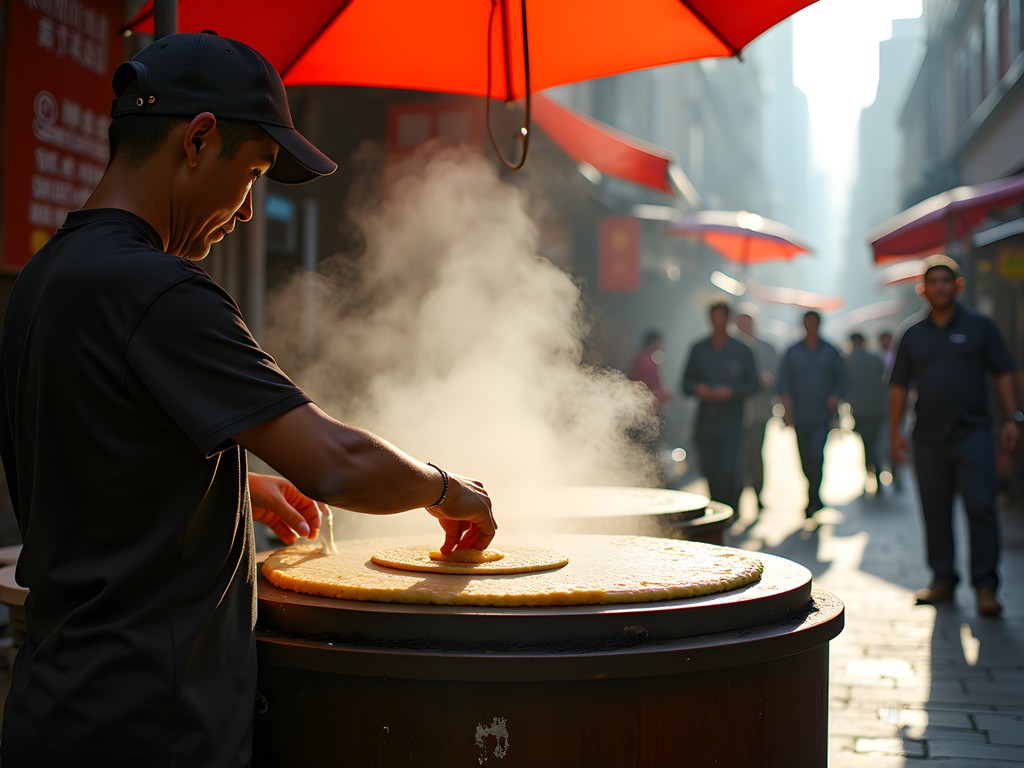
💡 Pro Tips
- Carry small bills (1 and 5 yuan notes) as most street vendors don't accept cards or WeChat Pay from foreign accounts
- Look for stalls with lines of locals – high turnover means fresher food
- Most street food is prepared before your eyes – watch the process first to learn the proper way to eat each item
Imperial Heritage: Dishes Fit for Emperors
Nanjing's six centuries as China's capital (on and off between the 3rd and 20th centuries) created a culinary tradition that catered to imperial tastes. This legacy lives on in several signature dishes that showcase the technical precision and artistic presentation valued by court chefs.
Jinling roast duck differs from its more famous Beijing cousin through its emphasis on crispy skin and leaner meat. At Nanjing Da Pai Dang restaurant, where I splurged on my one mid-range meal of the week, the chef explained that while Beijing duck is roasted whole, Nanjing's version is first steamed, then roasted, creating a more complex flavor profile and distinctive texture. The traditional serving method involves 28 precise knife cuts – a number I learned has cosmological significance in Chinese numerology.
Perhaps the most visually striking imperial dish is Osmanthus Cake (gui hua gao), which I discovered at a 120-year-old teahouse near the Ming Palace ruins. These delicate, translucent amber cubes are infused with osmanthus flowers that bloom throughout Nanjing each autumn. The elderly tea master who served me explained that these cakes once required three days of preparation for imperial banquets.
'The emperor would judge the skill of the chef by how clearly you could see a chrysanthemum petal placed underneath the cake,' she told me, demonstrating by placing a flower beneath my serving. The subtle floral sweetness paired perfectly with the grassy notes of the longjing tea she recommended.
Beggar's chicken (qi gai ji) tells a different story of imperial connection. Legend claims that a starving beggar stole a chicken and, lacking cooking implements, wrapped it in lotus leaves and mud before burying it in hot ashes. When a passing emperor smelled the resulting dish, he demanded the recipe for his royal kitchen. At Nanjing Impressions restaurant, they maintain this theatrical presentation – the clay-wrapped chicken arrives at your table where it's dramatically cracked open with a small hammer, releasing an intoxicating aroma of lotus, herbs, and tender meat that falls from the bone.
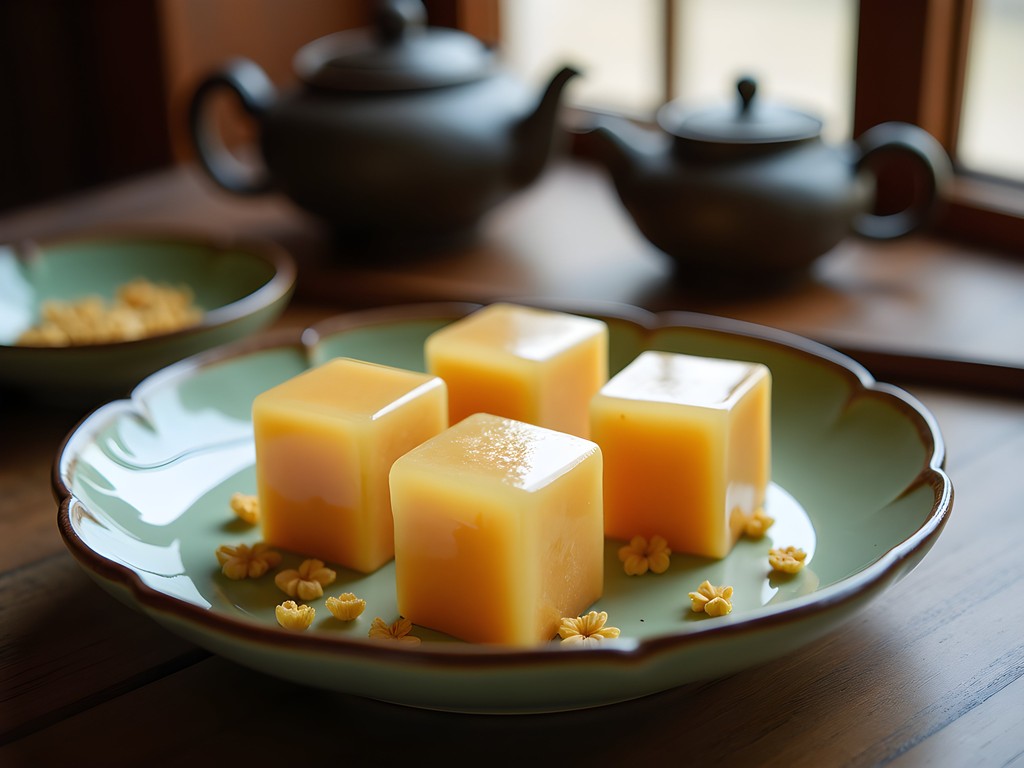
💡 Pro Tips
- Imperial-style restaurants often require reservations – have your hotel concierge call ahead
- Many traditional dishes need advance ordering (sometimes 24 hours) as they require extensive preparation
- Tea pairing is essential – ask for recommendations specific to each dish rather than ordering one tea for the entire meal
Noodles & Rice: The Staples Reimagined
No exploration of Nanjing cuisine would be complete without examining how this region transforms China's staple carbohydrates into distinctive local specialties. As someone who's documented the cultural significance of everyday objects across continents, I find particular joy in seeing how seemingly simple foods become vessels for regional identity.
Pidu noodles exemplify Nanjing's obsession with texture. Unlike the uniform machine-cut noodles found elsewhere, these are made by pulling and slapping dough against a work surface until it develops the perfect elasticity before being hand-torn into irregular strips. At a tiny family shop on Zhujiang Road, I spent an hour sketching the noodle master's movements – a choreography honed through decades of practice.
'The sound tells me when they're ready,' he explained, referring to the distinctive hollow thwack that occurs when the dough reaches optimal gluten development. The resulting noodles, served in a clear broth with pickled vegetables and thin slices of beef, possess a remarkable chew that machine-made versions simply cannot replicate.
Crab roe rice (xie huang fan) transforms humble rice into a celebration of seasonal bounty during autumn, when hairy crabs reach their peak. At Yechun Teahouse, established in 1877, I watched in fascination as the chef folded vibrant orange roe through perfectly cooked rice grains, creating a dish that's simultaneously simple and luxurious.
What fascinated me most was discovering the tangbao – soup dumplings that take the concept of xiaolongbao to new heights. At Jinling Hotel's restaurant, where they've been making these since 1961, each dumpling is significantly larger than the Shanghai version, served with a straw to drink the rich broth before eating the wrapper. My travel chopsticks weren't quite up to the task of handling these delicate creations without spillage, prompting gentle laughter and an impromptu lesson in proper technique from my server.
'You must approach from underneath, like catching a fish,' she demonstrated, her movements so precise they reminded me of the bamboo craftspeople I'd documented in rural Anhui province – evidence that the same attention to detail permeates all aspects of Chinese material culture.
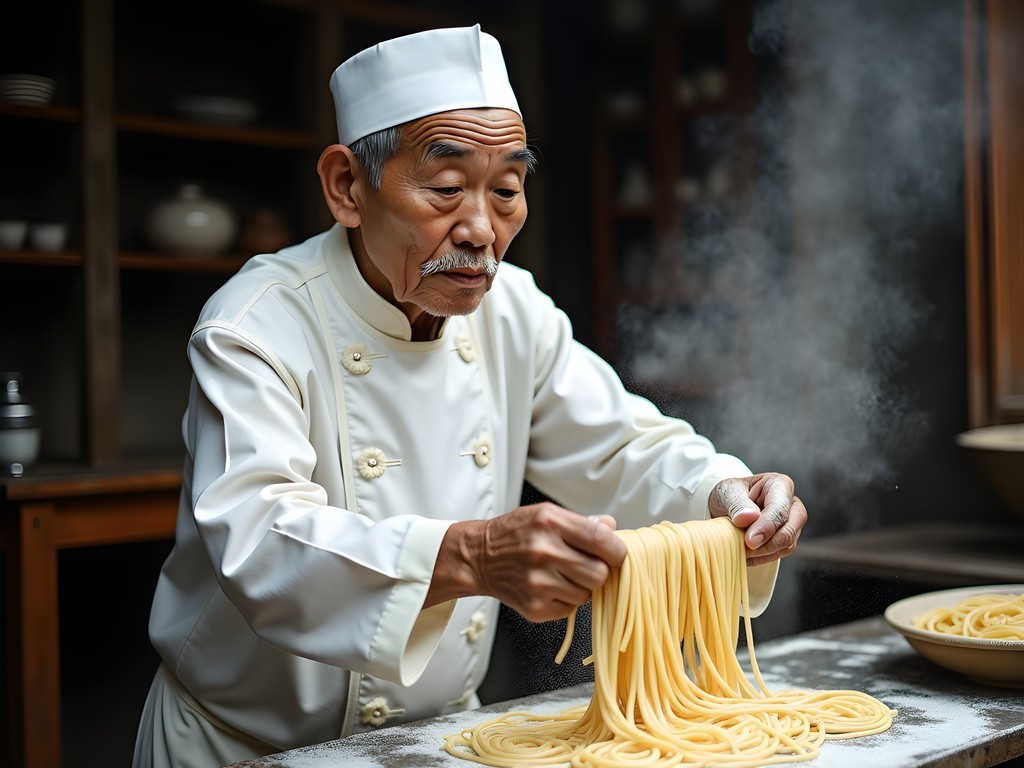
💡 Pro Tips
- When ordering noodles, you can specify thickness – 'xi' for thin or 'cu' for thick
- Rice dishes are traditionally eaten toward the end of a meal, not as a side throughout
- When eating tangbao, first bite a small hole and suck out the soup before consuming the wrapper to avoid messy spills
Sweet Endings: Desserts That Tell Stories
Desserts in Nanjing reflect the region's preference for subtle sweetness and textural contrast, often incorporating seasonal fruits and flowers rather than the heavy sugar content found in Western confections. As someone with a moderate sweet tooth, I found these gentle conclusions to meals perfectly balanced.
Qinhuai eight treasures rice pudding represents perhaps the most famous sweet from the region. At Chunhuazhai, a 150-year-old confectionery near Qinhuai River, I watched artisans carefully arrange eight specific ingredients – including red dates, lotus seeds, and candied fruits – in decorative patterns within a bamboo steamer before adding glutinous rice and a modest sugar syrup. The result resembles a jeweled mosaic, with each spoonful offering different flavor combinations.
What impressed me most was learning how these patterns tell stories – some arrangements represent prosperity, others longevity or harmony. 'We make them differently for each season and celebration,' explained the shop owner, showing me designs specific to various festivals. As someone who's studied how design communicates cultural values across mediums, I was fascinated by this edible symbology.
Sesame candy (zhima tang) appears deceptively simple – thin, crisp sheets that shatter delicately when bitten. Yet at Laomendong's Zhima Tang shop, where I joined an impromptu workshop one rainy afternoon, I discovered the physical demands of its creation. The process involves repeatedly stretching and folding molten sugar with roasted sesame seeds until it develops a silky sheen and distinctive texture.
'My shoulders still ache every night after 40 years making this candy,' laughed the elderly proprietor as he demonstrated the pulling technique. When I attempted it myself, my arms were burning after just two minutes – a humbling reminder of the physical craft behind seemingly simple foods.
Perhaps most emblematic of Nanjing's approach to sweets is yaxue fensi tang – a dessert soup of snow fungus, red dates, and lotus seeds. At a modern dessert shop in Xinjiekou, I was initially skeptical of this gelatinous, cloud-like creation. Yet its delicate sweetness and unusual texture – simultaneously firm and yielding – perfectly embodied the balanced approach to flavor I'd encountered throughout Nanjing's culinary landscape.
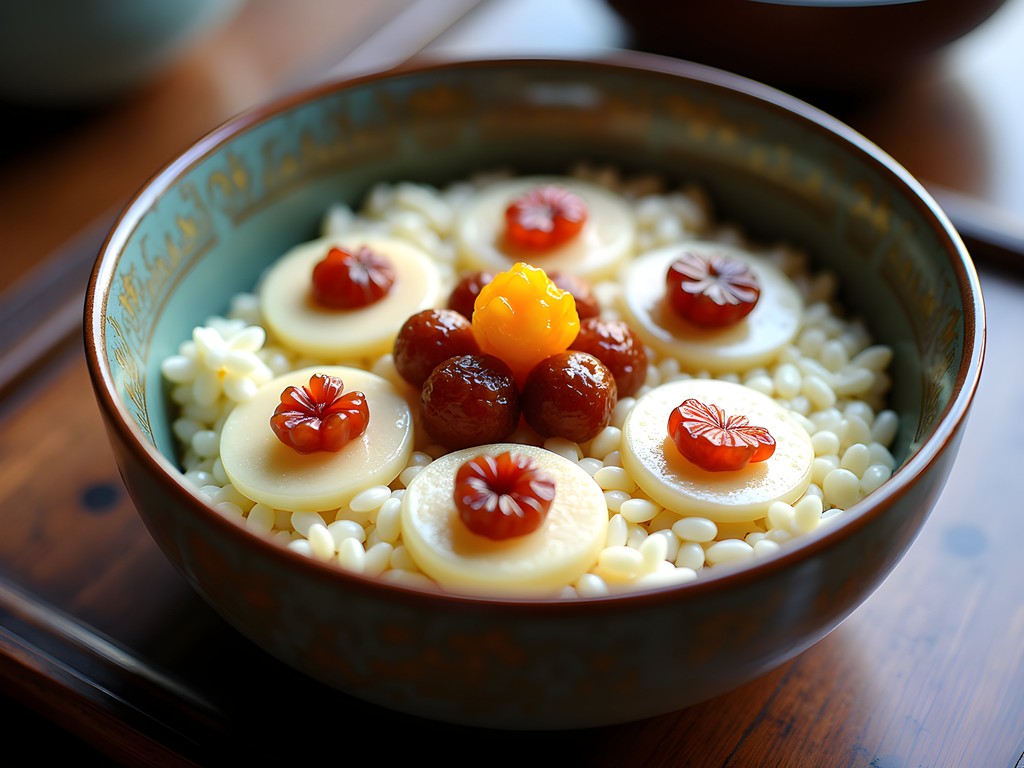
💡 Pro Tips
- Dessert shops often offer small sample sizes – perfect for trying multiple varieties without overindulging
- Many traditional sweets are believed to have medicinal properties – ask about these connections for cultural insight
- Look for seasonal specialties like osmanthus-infused desserts in autumn or loquat sweets in late spring
Final Thoughts
As I pack my sketchbook filled with culinary observations and board my train to Shanghai, I'm struck by how Nanjing's food embodies the same design principles I've documented in its architecture: balance, restraint, respect for tradition, and subtle innovation. These 15 dishes offer more than mere sustenance – they're edible artifacts that tell the story of a city at the crossroads of imperial grandeur and everyday ingenuity. For the solo traveler willing to venture beyond China's more famous culinary destinations, Nanjing offers rare insight into how a regional cuisine develops in conversation with its cultural landscape. Whether you're slurping tangbao through a straw or watching master noodle makers perform their daily choreography, these food experiences create connections that transcend language barriers. After all, in my years documenting design across continents, I've found that sometimes the most profound cultural understanding comes not through what we see, but through what we taste.
✨ Key Takeaways
- Jiangsu cuisine emphasizes subtle flavors and precise technique rather than bold seasonings
- Many dishes connect directly to Nanjing's imperial history and showcase presentation as important as taste
- Street food offers the most accessible and budget-friendly introduction to authentic local flavors
- Understanding the cultural context and proper eating techniques enhances appreciation of each dish
- Seasonal ingredients dictate many specialties – plan your culinary exploration accordingly
📋 Practical Information
Best Time to Visit
year-round, though autumn (September-November) offers seasonal specialties like hairy crab and osmanthus desserts
Budget Estimate
$25-35 per day for food (street food meals $2-5, mid-range restaurant meals $8-15)
Recommended Duration
5-7 days to fully explore the culinary landscape
Difficulty Level
Beginner-Friendly With Basic Translation Tools

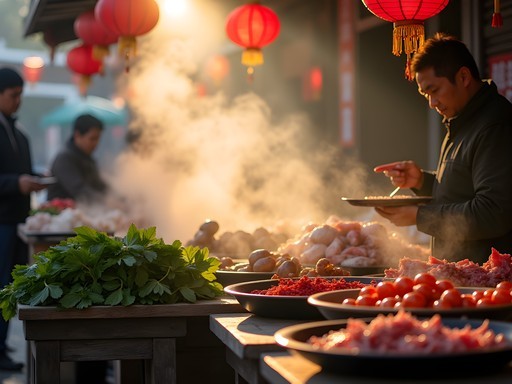
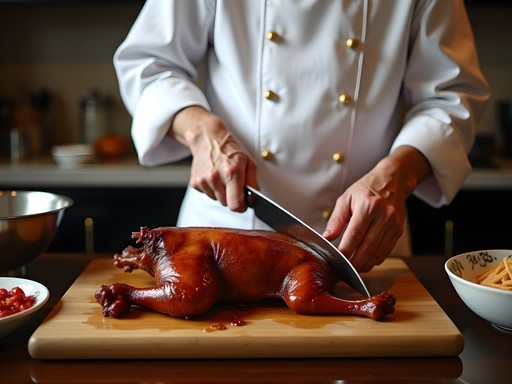
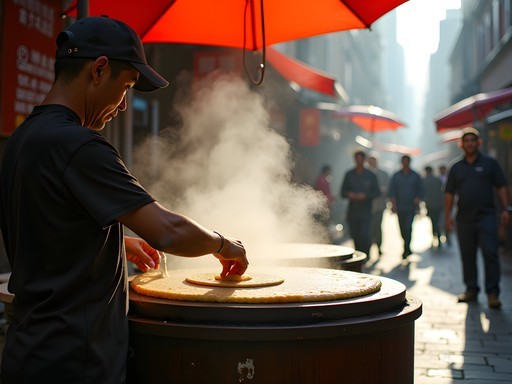
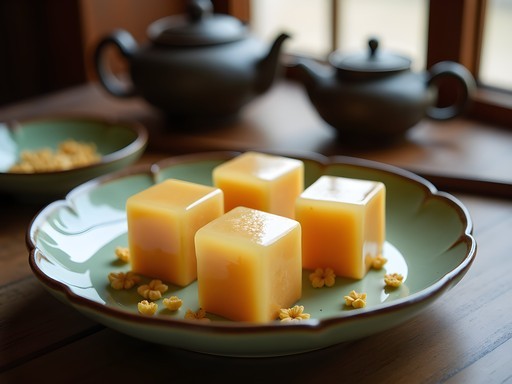
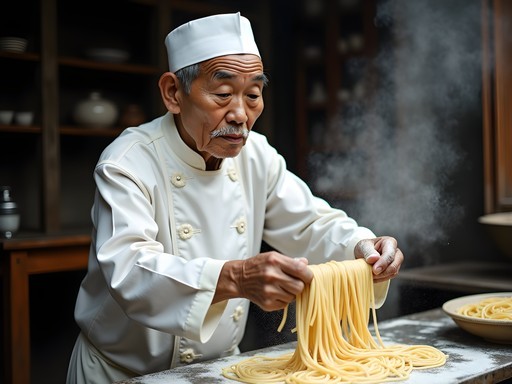
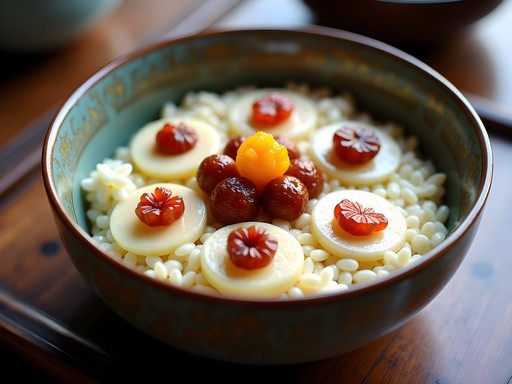


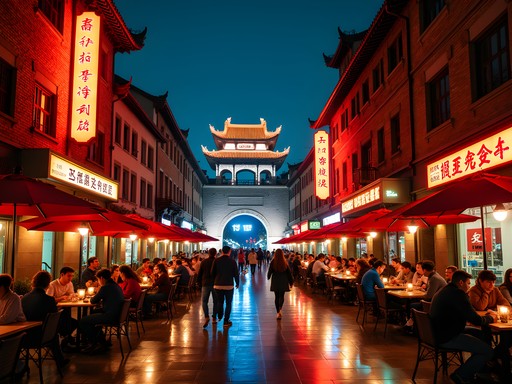




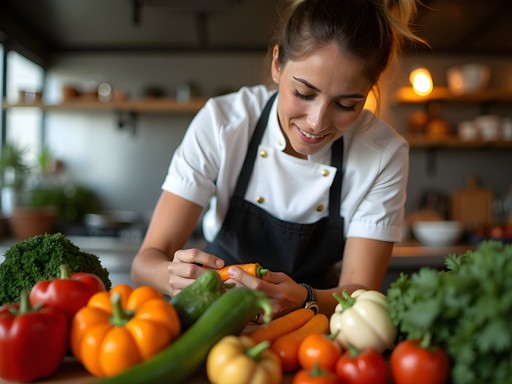
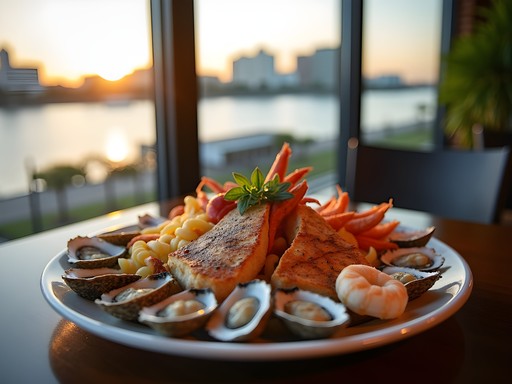
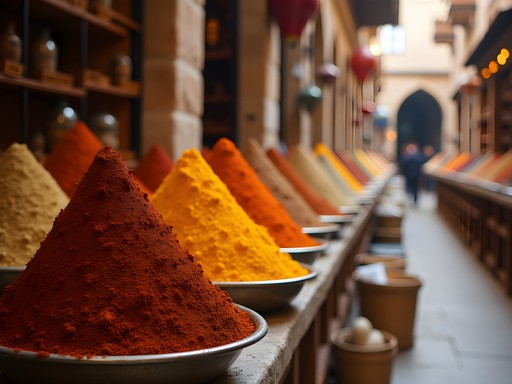
Comments
hikinglover
Great post! I'm curious about the 'Imperial Heritage' dishes - are they super expensive or can you find them at regular restaurants? Planning a trip and trying to budget accordingly.
Olivia Sanchez
Most mid-range restaurants serve versions of imperial dishes! They're part of everyday cuisine now. Jinling Hotel Restaurant has the most authentic versions, but you can find affordable options at places like Nanjing Impressions chain too.
hikinglover
That's really helpful, thanks! I was worried we'd need to splurge for the good stuff.
skybuddy
Those pan-fried dumplings look amazing! 🤤
Casey Andersson
Olivia, your post brought back so many memories! I spent two weeks in Nanjing last year and became absolutely obsessed with duck blood soup - something I NEVER thought I'd say! The texture is nothing like what westerners might expect. I found this tiny family-run place near Confucius Temple that served it with the most delicate ginger notes. I documented the whole culinary journey in my travel journal which now has soy sauce stains on half the pages! The tangmibaba (sweet rice cake) you mentioned was my daily breakfast. Did you try the hairy crab when you visited? It was just coming into season when I left.
hikinglover
Duck blood soup?? I'm intrigued but nervous to try it. Is it really worth pushing past the mental block?
Casey Andersson
Absolutely! It's like silken tofu with a mild iron taste - nothing scary. Start with a small bowl mixed with lots of the broth and vermicelli. You'll be surprised!
summerrider8642
This post made me so hungry! I'm heading to Nanjing next month - which food street would you recommend for trying the duck dishes? Is Fuzimiao the best spot?
Olivia Sanchez
Fuzimiao is great for the atmosphere, but for the absolute best duck, I'd recommend Jinling Hotel's restaurant or Nanjing Impressions. Both are more authentic than the tourist spots!
summerrider8642
Thanks so much! Adding those to my list right away.
escapeblogger
Those street food pancakes look amazing in your photos! Are they sweet or savory?
springone
Any tips for vegetarians in Nanjing? Are there good options?
wandertime
Not the author but I found amazing tofu dishes everywhere in Nanjing! The mock duck made from mushrooms at Buddhist temples is incredible too.
Hayden Butler
Olivia, your post transported me back to my unforgettable week in Nanjing! I still dream about those early mornings at Fuzimiao, watching elderly locals debate the merits of different breakfast stalls while sipping warm soy milk. The duck blood soup you mentioned was a revelation - I was initially hesitant but ended up ordering it three days straight! My food guide (a retired professor) insisted we try a small family restaurant near the Confucius Temple where they've been making the same imperial heritage dishes for four generations. I documented everything in my travel journal which now has soy sauce stains that bring back delicious memories. Your sketch descriptions reminded me how food and art are so beautifully connected in Jiangsu cuisine.
escapeblogger
Do you remember the name of that family restaurant? Heading to Nanjing next month!
Hayden Butler
It was called Lao Zhengxing (老正兴). Small place, easy to miss, but look for the red lanterns about 5 minutes east of the temple. Try their braised meatballs!
backpacklegend5835
Just had the salted duck in Nanjing last week. Life changing!
Michael Cook
Excellent breakdown of Jiangsu cuisine, Olivia! I spent three weeks in Nanjing last year documenting regional food variations and your analysis of the 'artful balance of subtlety' is spot on. The locals I met emphasized how their cuisine focuses on preserving natural flavors rather than overwhelming with spices. Did you notice how even their soy sauce is lighter than what's used in other regions? The duck blood soup was initially challenging for me, but paired with those pan-fried dumplings, it created a fascinating contrast. Your section on imperial heritage dishes was particularly insightful.
springone
Did you try the Jinling duck? Is it really that different from Peking duck?
Michael Cook
Yes! The Jinling duck is less about the crispy skin and more about the tender meat. It's also marinated differently - more subtle and less sweet than Peking duck. Definitely worth trying both to compare!
wandertime
Those duck dishes sound amazing! Definitely adding Nanjing to my food bucket list.
Venture X
Premium card with 2X miles, $300 travel credit, Priority Pass